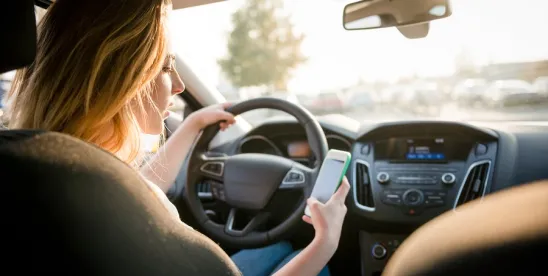Distracted driving has been a growing concern over the last decade and state and local governments are beginning to respond by implementing severe laws that would deter drivers from using or even looking at their cellphones while they are on the road. California enacted a law in the beginning of 2017 that will prohibit drivers from using their phone for any purpose whatsoever while in their hands or laps. The public has already responded with citizens taking up both sides of the issue in their remarks. For many who fear for their own safety, the law has been long overdue.
Closure of a Loophole Which Made Previous Laws Difficult to Enforce
The new law is very similar to an existing California law that prohibited the use of cellphones while driving to make calls or to text. Drivers could still use hands-free calling and were able to use phones to browse social media, access music playlists and to even film themselves and others while their vehicles were in motion. All of these activities detract from the ability of a driver to focus on the road ahead and commonsense has not prevailed in history.
A sharp spike in the number of accidents across the nation is being attributed to distracted driving and the rise of handheld technology is to blame. With the new law in effect, police officers no longer need to determine that a driver is actually speaking on the phone or having a conversation over text. If the phone is in hand, the driver will be pulled over.
If a driver wishes to use hands-free calling, he or she will now need to mount the phone on the dashboard and may only operate it to accept a call.
Concerned Citizens Fear the Law Does Not Go Far Enough
There have been many positive reactions to the new law, but cell phones are not the sole source of driver distraction. Drivers eat and drink behind the wheel, put their makeup on in traffic and find many other unique ways to multitask. Those who have voiced objections to the law often say that they want all distractions to be included and they fear that police officers will still be unable or unwilling to enforce the law.
On today’s roads, it is almost impossible not to notice other drivers using cell phones or other forms of technology, so those who approve of the law believe that it is a large step in the right direction and that it will save lives. Studies have showed that in many cases, distracted driving is more dangerous than driving while fatigued or under the influence of drugs or alcohol.
With alcohol taking so many lives on the road, it is a stark comparison to be made and while talking and texting do not result in accidents that are as severe, some experiments have shown that a driver is more capable of operating a vehicle while under the influence or tired than while attempting to use a cellphone or other handheld device.
What it boils down to is the need for people to put aside the need to respond to their family and friends for the time it takes them to get to their destination. Since so many seem to lack the self-control to do so, stricter laws need to be in place to deter them from placing themselves and others at risk. The California law is one great step in this direction and other states are likely to take a page from the state’s book and enact similar laws of their own.
http://www.ots.ca.gov/Media_and_Research/Campaigns/Distracted_Driving.asp
https://www.nytimes.com/2017/01/05/us/cell-phone-while-driving-laws.html?_r=0




 />i
/>i
